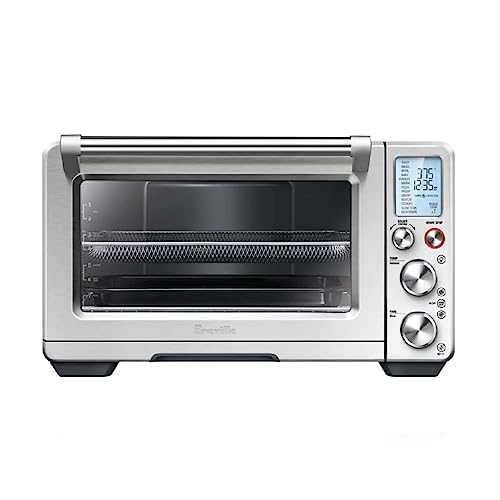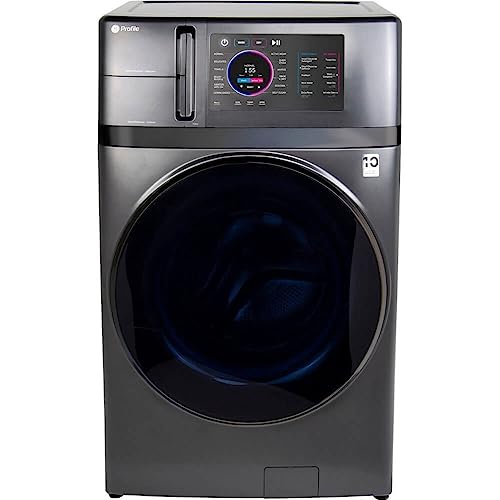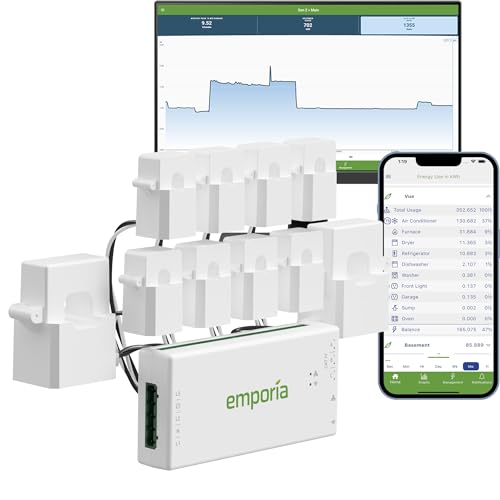Understanding Smart Appliances
As technology continues to evolve, the term “smart appliances” has become increasingly common in homes across the globe. But what exactly are smart appliances, and how do they differ from traditional ones? In this section, we’ll delve into the world of smart appliances, the technology that powers them, and the benefits they provide—especially regarding energy efficiency.
What Are Smart Appliances?
Smart appliances are devices that are equipped with internet connectivity and advanced functionalities, allowing them to be controlled remotely via smartphones, tablets, or voice-activated smart assistants. Unlike traditional appliances, which operate independently of user input once set up, smart appliances can gather and share data, enabling them to be more adaptive and responsive to users’ needs.
Key Features of Smart Appliances
Examples of Smart Appliances:
Differences Between Smart and Traditional Appliances
The key differences between smart and traditional appliances lie in their functionalities, control options, and energy management capabilities.
| Feature | Traditional Appliances | Smart Appliances |
|---|---|---|
| Control | Manual operation; limited by physical controls | Remote control using mobile apps or voice commands |
| Data Management | Minimal data on performance | Generates usage reports; monitors energy consumption |
| Integration | Operates independently | Can work in tandem with other smart devices |
| Automation | Requires manual setup each time | Can be programmed for automatic tasks |
Technology Behind Smart Appliances
Smart appliances leverage the Internet of Things (IoT) technology to operate and communicate with users. IoT is a network of interconnected devices that can send and receive data. This technology is central to enabling features like remote monitoring, updates, and alerts.
How IoT Works in Smart Appliances
- Sensors: Smart appliances are equipped with sensors that collect real-time data on various parameters—temperature in refrigerators, water usage in dishwashers, or air quality in smart air purifiers.
- Connectivity: Through Wi-Fi or Bluetooth, these appliances communicate data to and from cloud servers.
- User Interface: Users can interact with these appliances via mobile apps. For instance, the Whirlpool Smart Washer allows users to check laundry status and receive notifications when cycles are complete, all from a smartphone.
- Automation & Integration: Smart appliances can connect with home automation systems, allowing users to set schedules or trigger appliances based on specific conditions. For example, you can set the Nest Learning Thermostat to lower the temperature when no one is home, leading to better energy management.
Benefits of Smart Appliances
Improved Energy Efficiency
One of the most compelling benefits of smart appliances is their ability to manage energy consumption effectively. Here’s how:
Greater User Control Over Energy Consumption
With smart technologies, users gain unprecedented control over their energy usage. Consider the following advantages:
Practical Examples of Energy-Efficient Smart Appliances
By understanding smart appliances and their benefits, individuals can make informed decisions that lead to a more efficient, convenient, and sustainable lifestyle. By integrating these technologies, users can enjoy enhanced control over their domestic environments, streamlining their day-to-day routines while contributing to energy conservation efforts.



Key Features to Look for in Energy-Saving Smart Appliances
When upgrading to energy-saving smart appliances, understanding their key features is crucial for making informed choices that benefit both the environment and your budget. Here are essential traits and capabilities to look for in your next smart appliance.
Energy Monitoring Capabilities
One of the standout features of energy-saving smart appliances is their energy monitoring capabilities. Appliances equipped with this feature enable users to track their energy consumption in real-time, providing insights into usage patterns that can lead to significant savings.
Practical Examples:
Benefits:
Programmable Settings
Programmable settings are another essential feature in energy-saving smart appliances. These allow users to set their devices to operate during off-peak energy hours or to turn off after a set period, promoting energy efficiency seamlessly.
Practical Examples:
Benefits:
Remote Control via Apps
The ability to control your appliances remotely through a smartphone app enhances convenience while providing additional energy-saving features. This means you can turn appliances on or off, schedule operations, and even receive notifications about energy consumption from virtually anywhere.
Practical Examples:
Benefits:
Integration with Smart Home Systems
Smart appliances that integrate with existing smart home systems offer enhanced energy-saving capabilities. This integration allows devices to communicate with one another, enabling more efficient management of energy use across the entire home.
Practical Examples:
Benefits:
Energy Star Ratings and Certifications
When shopping for energy-saving smart appliances, looking for Energy Star ratings and other certifications can guide your choices. Energy Star appliances are rigorously tested and certified to meet strict energy efficiency guidelines set by the U.S. Environmental Protection Agency (EPA).
Practical Examples of Certified Products:
| Appliance Type | Brand/Model | Energy Star Rating | Yearly Energy Cost |
|---|---|---|---|
| Refrigerator | Whirlpool WRX735SDHZ | Yes | $65 |
| Washing Machine | LG WM3900HWA | Yes | $35 |
| Dishwasher | Bosch SHEM78ZH5N | Yes | $30 |
| Smart Thermostat | Ecobee SmartThermostat Premium | Yes | $8 (using savings from HVAC management) |
Benefits:
By considering these essential features of energy-saving smart appliances, you’ll not only enhance your home’s efficiency but also enjoy the added comfort and convenience that modern technology provides.



Top Smart Appliances for Energy Savings
As we become more conscious of our environmental impact and the rising cost of utility bills, investing in energy-efficient smart appliances has never been more relevant. These innovations not only make our lives easier but also help reduce our carbon footprint. Below, we present a curated list of some top smart appliances that excel in energy savings, featuring their key benefits, user reviews, and efficiency ratings.
Smart Thermostat: Nest Learning Thermostat
Energy-Saving Features
The Nest Learning Thermostat is one of the leading options on the market for reducing energy consumption. It learns your habits, adjusts the temperature when you’re away, and can be controlled remotely via a smartphone app. Here’s how it saves energy:
User Reviews
Users rave about its user-friendly interface and the savings they experience on their utility bills. Many report annual savings between 10-15% on heating and cooling costs.
| Feature | Details |
|---|---|
| Brand | Nest |
| Energy Savings | 10-15% per year |
| Control | Smartphone app and voice commands |
| Installation | DIY or professional installation |
Smart Refrigerator: LG Smart InstaView Refrigerator
Energy-Saving Features
The LG Smart InstaView Refrigerator is a game changer in the kitchen. With features aimed at energy efficiency, this appliance not only keeps food fresh but also conserves energy:
User Reviews
Customers appreciate the convenience of the touchscreen panel and voice activation, helping them manage food and reduce waste efficiently. Many appreciate the real-time energy monitoring feature.
| Feature | Details |
|---|---|
| Brand | LG |
| Energy Savings | Approx. 20% compared to non-Energy Star models |
| Capacity | 29 cu. ft. |
| Smart Features | Remote control, voice recognition |
Smart Washing Machine: Samsung Smart Washer
Energy-Saving Features
The Samsung Smart Washer leverages advanced technology to reduce water and energy usage:
User Reviews
Users admire its washing performance and reduced water usage, often reporting substantial savings on their water bill. The integration with Samsung SmartThings allows for seamless control.
| Feature | Details |
|---|---|
| Brand | Samsung |
| Energy Savings | Up to 30% less water and energy usage compared to conventional washers |
| Cycle Time | Customizable based on load |
| Smart Features | Remote control, cycle notifications |
Smart Oven: June Smart Oven
Energy-Saving Features
The June Smart Oven is more than just an oven; it’s an all-in-one device that bakes, broils, roasts, and air fries:
User Reviews
Many users love its versatility and the ease of cooking meals with minimal energy waste. The precise cooking algorithms provide consistent results and reduce the chances of overcooking.
| Feature | Details |
|---|---|
| Brand | June |
| Energy Savings | Generally consumes 50% less energy than traditional ovens |
| Cooking Methods | Multiple (Bake, Broil, Air Fry, etc.) |
| Smart Features | Food identification and automated cooking |
Each of these smart appliances brings advanced technology into the home, making everyday tasks more convenient while being mindful of energy consumption. Adopting any of these devices can lead to significant savings on energy bills and contribute positively to a more sustainable home environment.
Maximizing Efficiency for a Sustainable Future
In conclusion, the blog post highlights the significant impact smart appliances can have on energy savings, emphasizing features such as energy monitoring, automation, and efficiency. Among the various options discussed, smart thermostats emerge as the top recommendation due to their ability to optimize heating and cooling while significantly reducing energy consumption. Readers are encouraged to reflect on their specific needs and preferences, as investing in a smart appliance can lead to substantial energy savings and contribute to a more sustainable lifestyle. By making informed choices, they can not only enhance their home’s efficiency but also play a part in promoting environmental sustainability.



Leave a Reply